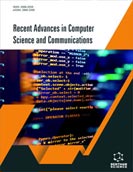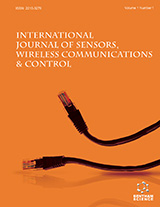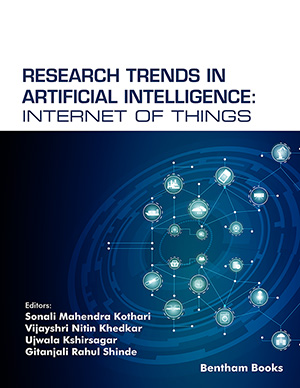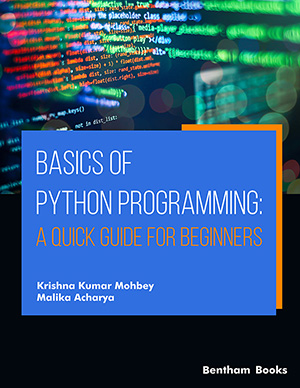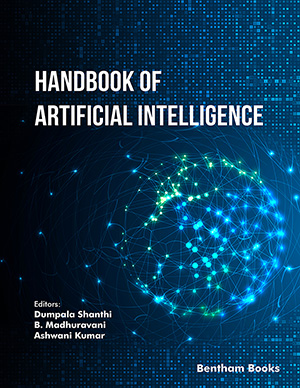Abstract
This research is conducted to study a fuzzy system with an improved rule base. The rule base is an important part of any fuzzy inference system designed. The rules of a fuzzy system depend on the number of features selected. Selecting an optimized number of features is called feature selection. All features (parameters) play an important role in the input to the system, but they have a different impact on the system performance. Some features do not even have a positive impact on multiple classes of classifiers. Reduced features, depending on the objective to be achieved, require fewer training rules, thereby improving the accuracy of the system. Learning is an important mechanism to automate fuzzy systems. The overall purpose of the research is to design a general fuzzy expert system with improvements in the relationship between interpretability and accuracy by improving the feature selection and learning mechanism processes through nature-inspired techniques or innovating new methodologies for the same
Keywords: Feature selection, filter, fuzzy expert system, hybrid, graph-based, SVM, data dimensionality.
[http://dx.doi.org/10.1007/978-1-4615-5689-3]
[http://dx.doi.org/10.1201/9781584888796]
[http://dx.doi.org/10.1016/j.aca.2011.07.027]
[http://dx.doi.org/10.1007/s10462-011-9230-1]
[http://dx.doi.org/10.1007/978-3-319-10247-4]
[http://dx.doi.org/10.1137/1035031]
[http://dx.doi.org/10.1007/978-1-4757-1904-8]
[http://dx.doi.org/10.1145/1273496.1273633]
[http://dx.doi.org/10.1016/j.knosys.2017.10.028]
[http://dx.doi.org/10.1109/TKDE.2005.66]
[http://dx.doi.org/10.1007/s11222-007-9033-z]
[http://dx.doi.org/10.1109/TAI.1997.632300]
[http://dx.doi.org/10.1093/bioinformatics/btl214] [PMID: 16873514]
[http://dx.doi.org/10.1109/RAIT.2012.6194631]
[http://dx.doi.org/10.1016/j.ins.2013.12.029]
[http://dx.doi.org/10.1088/1742-6596/1601/3/032048]
[http://dx.doi.org/10.1145/1273496.1273641]
[http://dx.doi.org/10.1109/APCIP.2009.185]
[http://dx.doi.org/10.1016/j.patcog.2017.07.020]
[http://dx.doi.org/10.3233/IDA-2000-4103]
[http://dx.doi.org/10.1109/34.990133]
[http://dx.doi.org/10.1109/ICDM.2002.1183893]
[http://dx.doi.org/10.1007/11892755_59]
[http://dx.doi.org/10.1109/TAAI.2010.49]
[http://dx.doi.org/10.1016/j.patcog.2011.12.008]
[http://dx.doi.org/10.1016/j.knosys.2014.11.008]
[http://dx.doi.org/10.1007/978-3-030-38445-6_2]
[http://dx.doi.org/10.1016/j.engappai.2014.03.007]
[http://dx.doi.org/10.1016/j.neucom.2015.05.022]
[http://dx.doi.org/10.1016/j.patcog.2015.03.020]
[http://dx.doi.org/10.1016/j.eswa.2016.01.021]
[http://dx.doi.org/10.1016/j.ins.2019.10.069]
[http://dx.doi.org/10.1016/j.knosys.2020.106167]
[http://dx.doi.org/10.1109/ACCESS.2020.2986217]
[http://dx.doi.org/10.1016/j.comnet.2019.107042]
[http://dx.doi.org/10.1109/TCBB.2007.70257] [PMID: 19875859]
[http://dx.doi.org/10.1109/ICMLA.2009.86]
[http://dx.doi.org/10.1109/IITA.2009.390]
[http://dx.doi.org/10.1145/1835804.1835848]
[http://dx.doi.org/10.5591/978-1-57735-516-8/IJCAI11-267]
[http://dx.doi.org/10.1109/TCYB.2013.2272642] [PMID: 23893760]
[http://dx.doi.org/10.1109/TKDE.2011.222]
[http://dx.doi.org/10.1109/TKDE.2013.65]
[http://dx.doi.org/10.1109/ICDM.2014.58]
[http://dx.doi.org/10.1609/aaai.v30i1.10168]
Chengdu, China. [http://dx.doi.org/10.1007/978-3-319-46654-5_65]
[http://dx.doi.org/10.1016/j.neucom.2016.03.017]
[http://dx.doi.org/10.1016/j.neucom.2017.02.034]
[http://dx.doi.org/10.1016/j.patcog.2014.08.006]
[http://dx.doi.org/10.1016/j.imavis.2016.11.014]
[http://dx.doi.org/10.1109/ACCESS.2017.2699741]
[http://dx.doi.org/10.1016/j.knosys.2017.03.002]
[http://dx.doi.org/10.1016/j.neucom.2018.04.001]
[http://dx.doi.org/10.1016/j.knosys.2018.01.009]
[http://dx.doi.org/10.1016/j.eswa.2017.11.053]
[http://dx.doi.org/10.1109/TNNLS.2017.2650978] [PMID: 28141533]
[http://dx.doi.org/10.1109/TNNLS.2017.2785403] [PMID: 29994757]
[http://dx.doi.org/10.1016/j.patrec.2014.11.006]
[http://dx.doi.org/10.1016/j.patcog.2010.10.006]
[http://dx.doi.org/10.3233/IDA-2002-6605]
[http://dx.doi.org/10.3233/HIS-130182]
[http://dx.doi.org/10.1016/j.comnet.2020.107168]
[http://dx.doi.org/10.1109/TPAMI.2004.71] [PMID: 15742891]
[http://dx.doi.org/10.1109/TPAMI.2010.215] [PMID: 21135434]
[http://dx.doi.org/10.1007/3-540-45571-X_13]
Hong Kong, China Available from: http://dl.acm.org/citation.cfm?id=1172253 [http://dx.doi.org/10.1109/ICPR.2006.84]
[http://dx.doi.org/10.1016/j.neucom.2016.07.026]
[http://dx.doi.org/10.1109/ICHIS.2005.42]
[http://dx.doi.org/10.1109/BIBE.2006.253339]
[http://dx.doi.org/10.1007/978-3-642-01818-3_10]
[http://dx.doi.org/10.5815/ijmecs.2009.01.05]
[http://dx.doi.org/10.1016/j.eswa.2011.02.181]
[http://dx.doi.org/10.1016/j.asoc.2011.03.026]
[http://dx.doi.org/10.1109/FSKD.2009.449]
[http://dx.doi.org/10.1109/ICTAI.2011.135]
[http://dx.doi.org/10.1016/j.neucom.2014.07.037]
[http://dx.doi.org/10.1109/TNNLS.2014.2315526] [PMID: 25720002]
[http://dx.doi.org/10.1109/CIS.2008.204]
[http://dx.doi.org/10.1109/TKDE.2013.86]
[http://dx.doi.org/10.1007/s00138-014-0604-7]
[http://dx.doi.org/10.1109/IranianMVIP.2011.6121605]
[http://dx.doi.org/10.1016/j.neucom.2007.06.014]
[http://dx.doi.org/10.1007/978-3-642-22691-5_45]
[http://dx.doi.org/10.1109/ICMLC.2010.5581007]
[http://dx.doi.org/10.1007/978-3-642-23780-5_23]
[http://dx.doi.org/10.1016/j.patrec.2010.12.014]
[http://dx.doi.org/10.1109/ICALIP.2010.5685086]
[http://dx.doi.org/10.1145/1807167.1807297]
[http://dx.doi.org/10.1109/ICCIA.2010.6141595]
[http://dx.doi.org/10.1109/ICCIS.2011.54]
[http://dx.doi.org/10.1016/j.neucom.2012.05.031]
[http://dx.doi.org/10.1109/TNNLS.2014.2314123] [PMID: 25608288]
[http://dx.doi.org/10.1109/ICPR.2008.4761687]
[http://dx.doi.org/10.1109/AIMSEC.2011.6010202]
[http://dx.doi.org/10.1016/j.patrec.2012.03.001]
[http://dx.doi.org/10.1145/2072298.2072336]
[http://dx.doi.org/10.1109/TMM.2012.2199293]
[http://dx.doi.org/10.1016/j.imavis.2013.12.013]
[http://dx.doi.org/10.1007/s00530-014-0390-0]
[http://dx.doi.org/10.1109/ICNC.2007.666]
[http://dx.doi.org/10.1109/TNN.2010.2047114] [PMID: 20570772]
[http://dx.doi.org/10.1155/2013/416320]
[http://dx.doi.org/10.1007/978-3-319-19066-2]


